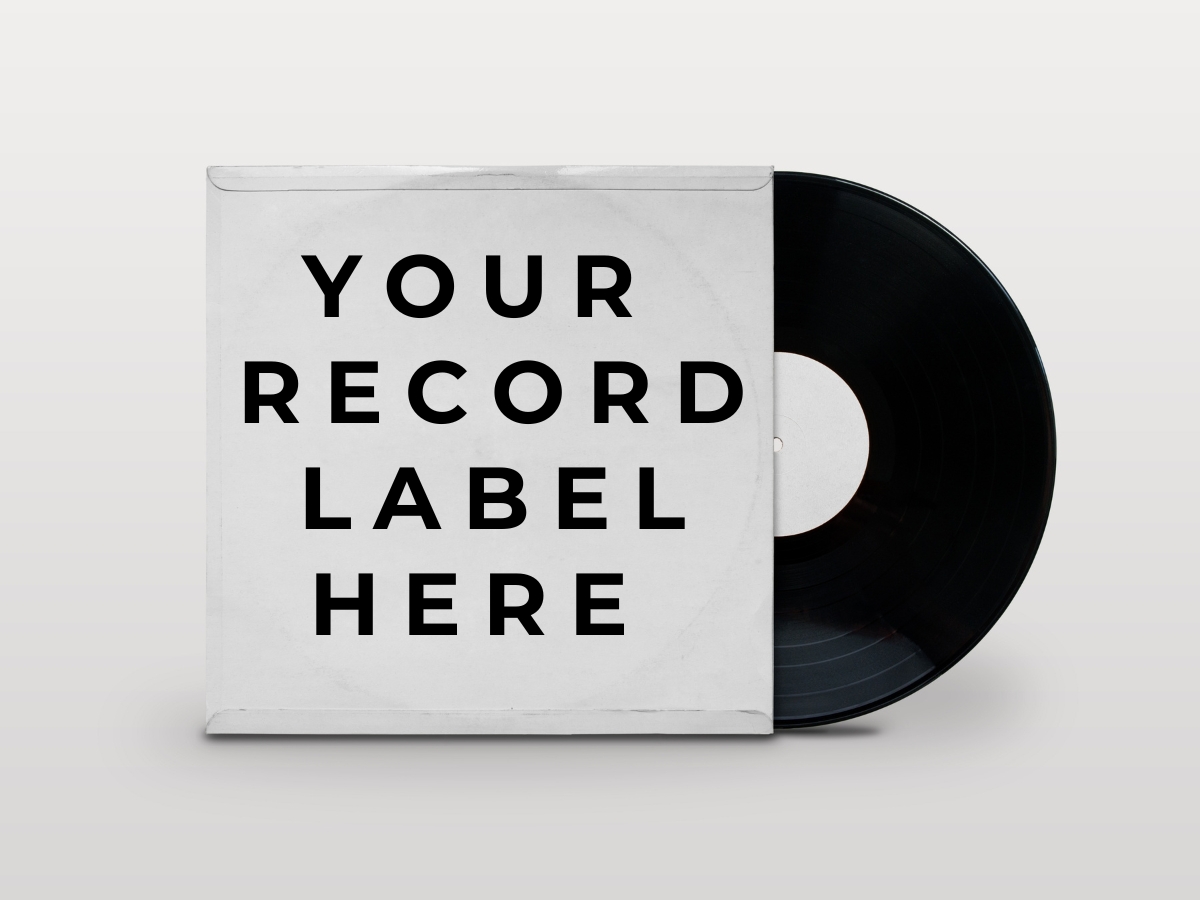In the ever-evolving realm of music, some instruments transcend time, leaving an indelible mark on the sonic landscape. Vintage Roland synthesizers stand as testament to this sonic legacy, pioneering the sound of generations past and present. Their iconic analog charm continues to captivate musicians and enthusiasts alike. In this section, we’ll delve into the enchanting world of these timeless machines, exploring their history, innovation, and enduring influence.

A Glimpse into the Past
Before the digital age swept over the music industry, analog synthesizers were the heartbeat of innovation. Vintage Roland synthesizers, with their warm, organic tones, took center stage during this era. Instruments like the legendary Juno-106, with its ethereal strings and lush pads, remain emblematic of the sonic landscapes of the ’80s. The TR-909, with its unmistakable beats, was a driving force behind the electronic dance revolution. And who could forget the VP-330, which brought vocoder-infused vocals into the mix, shaping the music of the late ’70s and beyond.
The Creative Powerhouses
What sets these vintage synthesizers apart is not just their historical significance, but their lasting impact on music creation. The Juno-106’s simplicity belies its immense sonic versatility, making it a favorite for both seasoned professionals and newcomers. The TR-909’s iconic beats have continued to thump through countless dance tracks, an essential ingredient in shaping rhythmic landscapes. The VP-330, with its pioneering vocoding capabilities, carved out a new dimension for vocal expression in music.
As we embark on this journey through the vintage Roland synthesizers, we’ll uncover the stories behind these iconic instruments, their role in shaping genres, and the enduring magic that continues to resonate with musicians and music enthusiasts alike. From the pioneering days to the present, the allure of vintage Roland synthesizers remains stronger than ever, reminding us that the roots of today’s sonic adventures run deep.
From the dusty corners of recording studios to the pulsating heart of live performances, the allure of vintage Roland synthesizers has never waned. These remarkable instruments have sculpted the sonic landscapes of multiple generations, leaving an indelible mark on music history. In this exploration of musical time capsules, we journey through the mesmerizing world of Vintage Roland Synthesizers, tracing their evolution, influence, and the enduring magic they bring to compositions.
Evolution of Sonic Innovation
In the late 70s and 80s, a revolution was brewing in the realm of electronic music. Enter the Roland TR-909, Juno-106, and VP-330—three trailblazing synthesizers that propelled the boundaries of musical creativity. The TR-909’s iconic beats laid the rhythmic foundation for genres spanning from techno to hip-hop. The Juno-106’s rich, warm tones captured the essence of the era’s pop anthems, while the VP-330, with its ethereal vocoder harmonies, transported listeners to new dimensions.
Influence Across Genres
These vintage gems transcended mere instruments; they became catalysts for innovation. The TR-909’s unmistakable kick drum found a home in countless dance tracks, its pulse resonating through clubs worldwide. Meanwhile, the Juno-106’s lush pads and funky basslines injected character into funk, new wave, and beyond. The VP-330’s experimental vocal synthesis ignited creativity in artists exploring avant-garde soundscapes.

As technology advanced, these analog treasures maintained their allure, garnering a cult-like following among modern musicians seeking a touch of vintage authenticity. Producers and performers alike continue to harness the soulful essence of these synthesizers, weaving threads of the past into the fabric of the present.
In the following sections of this article, I will delve into the intricate workings of each synthesizer, offering insights into their unique features, sounds, and the artists who have harnessed their potential. So join me on this auditory expedition as I unlock the secrets of Vintage Roland Synthesizers and the captivating stories they tell within the world of music.
Roland TR-909: The Heartbeat of Electronic Music
In the world of Vintage Roland Synthesizers, the TR-909 stands as a rhythmic legend, its iconic beats pulsating through the annals of electronic music history. Released in 1983, this drum machine transcended its utilitarian purpose, becoming a foundational pillar for numerous genres, shaping the very essence of techno, house, and beyond.

The Beat that Defined Generations
Imagine the electric energy of a crowded dancefloor, the bassline reverberating through your chest, and then, that unmistakable kick drum of the TR-909 delivering a punch that ignites the night. The throbbing pulse of tracks like “Acid Tracks” by Phuture and “Big Fun” by Inner City harnessed the 909’s unique sound to give birth to the acid house movement. Its four-on-the-floor rhythm has continued to dominate clubs, festivals, and underground parties, providing the heartbeat of countless anthems.
Sonic Signature
At the heart of the TR-909 lies its distinct analog sound, a product of Roland’s innovative approach to sound synthesis. This drum machine featured a collection of programmable drum sounds, from the crisp snare to the legendary kick drum that has become synonymous with the “909 kick.” The kick’s deep thump was a game-changer, infusing tracks with a powerful rhythm that demanded attention.
From Clubs to Classics
The impact of the TR-909 reverberated through nightclubs, warehouses, and festival stages, establishing itself as the rhythmic backbone of dance music culture. Tracks like “Acid Tracks” by Phuture and “Energy Flash” by Joey Beltram were among the first to harness the 909’s hypnotic beats, laying the groundwork for the electronic dance revolution.

As the years rolled on, its influence extended far beyond the dancefloor. The 909 kick found its way into pop, hip-hop, and even rock tracks. Madonna’s “Vogue” and Whitney Houston’s “I Wanna Dance with Somebody” are just a couple of examples that highlight the drum machine’s versatility.
The TR-909’s Legacy Today
Decades after its debut, the TR-909’s legacy endures. Its authentic analog sound and undeniable groove continue to captivate producers and musicians, sparking a revival of interest in vintage gear. Modern artists embrace the 909’s iconic presence, creating tracks that honour its history while pushing musical boundaries further.
The resurgence of analog hardware and the continued use of the TR-909 in live performances showcase its staying power. Artists like Aphex Twin, Richie Hawtin, and Daft Punk have all employed the machine in their productions, ensuring its place in the forefront of contemporary electronic music.
Embracing the Vintage Charm
Despite the advent of digital technology, the allure of the TR-909’s analog sound endures. Musicians and collectors alike treasure this vintage gem for its ability to inject character into tracks. It’s not just a drum machine; it’s a time capsule, encapsulating the essence of an era where electronic music was finding its voice.
The TR-909’s unique interface, complete with its distinctive buttons and knobs, adds to the charm. The tactile experience of programming beats on its surface is a connection to the past, a tangible reminder of the machine’s role in shaping musical history.
In conclusion, the Roland TR-909 stands as a testament to the power of innovation and creativity in music technology. Its beats have transcended time, evolving from the underground to the mainstream while preserving their essence. The 909 kick’s thump continues to resonate across generations, reminding us of the drum machine’s enduring impact within the realm of Vintage Roland Synthesizers.
Roland Juno-106: A Melodic Journey Through Time
Step into the realm of vintage Roland synthesizers with the Juno-106, an iconic analog polyphonic synthesizer that has etched its sonic imprint across decades of musical exploration. Released in 1984, the Juno-106 emerged as a beloved instrument with a signature warmth that continues to captivate musicians to this day.

The Sonic Tapestry of Juno-106
At the core of the Juno-106’s allure lies its distinctive sound palette. With its lush pads, ethereal strings, and expressive basslines, the Juno-106 became synonymous with the sounds of the 80s and beyond. Tracks like A-Ha’s “Take On Me” and Enya’s “Orinoco Flow” showcase the synthesizer’s ability to add emotive layers to compositions.
With six voices of polyphony, the Juno-106 allowed for intricate harmonies and expressive melodies. Its user-friendly interface made it accessible to musicians of all levels, making it a beloved addition to both professional studios and home setups.

An Interface of Intuition
One of the Juno-106’s standout features is its user-friendly interface. Designed for accessibility, its straightforward layout invites musicians to explore its sonic possibilities without the steep learning curve often associated with synthesizers. The tactile experience of turning knobs and adjusting sliders encourages creative experimentation.
The Chorus Effect, often referred to as the “Juno chorus,” deserves a special mention. This lush, swirling effect became a signature sound of the Juno-106. It transformed ordinary sounds into captivating textures, elevating tracks to new sonic dimensions.
The Juno’s Influence
The Juno-106’s influence extended far beyond the synth-pop era it emerged from. Its warm tones found their way into a diverse array of genres. From the soulful chords in R&B hits like Janet Jackson’s “Funny How Time Flies (When You’re Having Fun)” to the ethereal layers in electronic tracks by The Chemical Brothers, the Juno-106 remained a go-to choice.
Resurgence in Modern Music
In a digital age, the Juno-106’s analog charm remains a sought-after treasure. Its distinct sound continues to resonate with contemporary musicians and producers. Artists like Toro y Moi and Washed Out incorporate the Juno’s tones, bridging the gap between vintage nostalgia and modern innovation.
Preserving Analog Magic
In an age dominated by digital technology, the Juno-106 stands as a testament to the enduring charm of analog synthesis. Musicians who seek its sound are drawn to its ability to evoke emotion and authenticity. Its imperfections and quirks contribute to its character, reminding us that music is not just about precision—it’s about feeling.
As the synthesizer world evolves, the Juno-106 remains a beacon of sonic nostalgia. It’s a reminder that even in an era of endless possibilities, there’s something special about the simplicity and soulfulness of vintage instruments. The Juno-106’s legacy is a melodic journey through time, a harmonious bridge connecting the past, present, and future within the realm of Vintage Roland Synthesizers.
Roland VP-330: Unveiling Ethereal Harmonies
Among the vintage Roland synthesizers, the VP-330 emerges as a singular marvel, fusing vocal synthesis and string ensembles. Introduced in 1979, this analog synthesizer transcended musical boundaries, leaving an indelible mark on experimental and avant-garde compositions.

Vocal Vistas and Enchanted Strings
At its core, the VP-330 is a vocoder that can transform human speech into harmonised melodies. Its distinctive “robotic choir” sound found its way into iconic tracks like Jean-Michel Jarre’s “Oxygene IV” and Kraftwerk’s “Computer World.” The VP-330’s vocal capabilities added an otherworldly dimension to music, elevating it beyond traditional synthesizers.
In addition to vocal synthesis, the VP-330 offered lush string ensemble sounds. Its “ensemble” mode simulated the orchestral warmth of string sections, contributing to tracks like Tangerine Dream’s “Love on a Real Train.” This dual nature allowed artists to craft rich sonic landscapes that defied convention.
Trailblazing in Avant-Garde

The VP-330’s impact on experimental music is profound. Its vocoding abilities enabled artists to explore sonic textures that were previously uncharted. Laurie Anderson’s pioneering album “Big Science” featured the VP-330 prominently, showcasing its ability to transform spoken word into haunting melodies.
What sets the VP-330 apart is its unconventionality. It challenged artists to step outside their comfort zones, encouraging sonic experimentation. This synthesizer became a tool for crafting sonic atmospheres that defied traditional musical structures.
Transcending Genre
Unlike other vintage Roland synthesizers, the VP-330’s influence traversed genres, from electronic to rock and beyond. Its string ensemble added a touch of elegance to compositions, evident in Kate Bush’s “Breathing” and Joy Division’s “Atmosphere.”
Influence Beyond Synthesis
The VP-330’s impact extended beyond music production. Its distinctive sound seeped into pop culture, making appearances in movies and TV shows. Its role in shaping sonic identities is an often-overlooked facet of its enduring influence.
As we conclude our exploration of the VP-330, we recognize it as a testament to the power of creative innovation within the realm of Vintage Roland Synthesizers. Its ethereal harmonies, string symphonies, and vocal experiments stand as a reminder that music is a boundless realm, awaiting exploration.
Vintage Roland Synthesizers in the Modern Age
As I wrap up our journey through the captivating world of vintage Roland synthesizers, we’re reminded of their enduring impact. These instruments have transcended time, shaping musical genres and leaving an indelible mark on the history of sound. But the story doesn’t end with nostalgia; it continues with modern reimagining and tributes that keep the legacy alive.
Re-Issuing the Classics

In a harmonious blend of past and present, Roland has re-issued these iconic synthesizers in boutique models. The Roland Boutique series captures the essence of the originals, offering modern musicians a chance to experience the magic.
The TR-09, JU-06, and VP-03 pay homage to their predecessors while incorporating modern amenities like USB connectivity and MIDI control.

Embracing Technology
The digital age has also given rise to software plugins and hardware clones inspired by the vintage Roland synths. Brands like Arturia, Native Instruments, and Behringer have ventured into recreating the sonic signatures of these classics. Their plugins and hardware clones offer accessibility to musicians across the globe, making the vintage magic more attainable than ever.
Unleashing Creativity
These modern reimagining are more than just replicas; they’re a continuation of the legacy. Artists can now explore the sounds of the TR-909, Juno-106, and VP-330 without hunting for rare originals. The convenience of plugins and compact hardware units has democratized vintage sounds, allowing musicians to inject them into contemporary compositions.
A Fusion of Eras
In an era defined by technological advancement, the allure of vintage Roland synthesizers remains resolute. The resurgence of interest in analog sound highlights the timeless quality of these instruments. Musicians and producers recognize the value of blending past and present to craft unique sonic identities.
As we continue to explore the possibilities of music production, these vintage synthesizers serve as a bridge—a connection that traverses time and resonates with both established artists and emerging talents. They remind us that innovation doesn’t necessarily mean leaving behind the past. It’s about building upon the foundations laid by these iconic instruments.
Closing Thoughts
Vintage Roland synthesizers have paved the way for innovation, experimentation, and aural storytelling. They’ve shaped songs, defined genres, and sparked inspiration across generations. As we stand at the crossroads of past and present, we acknowledge the role technology plays in honoring these classics. Whether through re-issued boutique models, software plugins, or hardware clones, the legacy thrives.
So, whether you’re a purveyor of the analog charm of the original vintage synths or an explorer of their digital counterparts, the magic persists. The sounds that once captivated audiences in dimly lit studios and pulsating clubs now resonate through digital audio workstations and live performances.
Let’s celebrate the ever-evolving symphony of Vintage Roland Synthesizers. A symphony that continues to shape the sound of generations old and new!!



